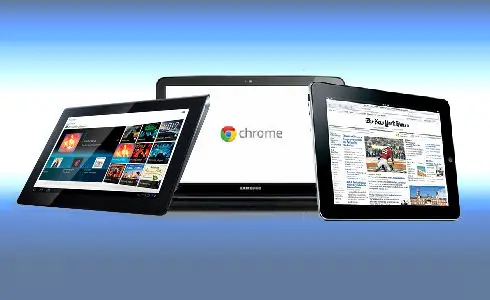If you have ever had a question about your iPad, you know you can find the answer online. Pretty soon however, you will be able to ask your 5th grader. Schools are currently testing new technology in the classroom as a way of teaching their students about technology as well as using it as a tool for teaching. These gadgets are proving valuable in the classroom regardless of a few limitations.
[Read also: Is an iPad a Good Gift for a Pre-Teen Child?]
iPads
It’s no surprise that the iPad was considered for the classroom. With the available apps for every subject and every need, the iPad is a great choice for a teaching tool. With young students already more tech savvy than their parents, the iPad is easy enough for children to learn.
Even with the many uses the iPad has in the classroom, schools are finding its limitations becoming an issue and preventing them from fully implementing these tablets as a learning tool. The need for an internet connection, lack of a keyboard, inability to support Flash, and cost are just a few issues that may take the iPad out of the classroom.
[Read more: The New iPad : What We Hoped For and What We Didn’t Get]
Android Tablets
The next runner up in the tablet race is Android tablets. With a large library of available apps, the Android tablets are a viable choice for a learning tool. As the cost of Android tablets is lower than the iPad, it is more feasible for schools.
However, administrators are running into the same problems with the Android tablets as the iPad. With the need for internet connection and the lack of keyboards, the familiarity within the students is lacking. Though the tablet does include a virtual keyboard, the same as an iPad, it is harder to type on than a conventional keyboard and is time consuming to use.
[Read more: Are Tablets Becoming The Preferred Computing Choice?]
Google Chromebooks
Another technology that schools are testing and looking closely at is Google Chromebooks. With an included keyboard, laptop feel, and familiarity, it is easier for young students to use. The cost is lower than the iPad and Android tablets, which is easier for schools on limited budgets to afford.
The internet issue is still present with the Chromebook. As many schools are still using wired networks in their computer labs and classrooms, connecting a class full of Chromebooks would mean switching to a wireless network. This usually comes at a high cost for the school.
Technology in the classroom only makes sense. As our world is run on technology, teaching our youngsters will only help them in the future. By using technology to find information, learn to use the web effectively and keep them up to date with the latest technology, we could see a future of more productive graduates entering the workforce.
[Read more: The Impact of Tablet Devices on The Education Sector]


This is a good idea to expose technology in the field of education and ipads are one of the great contributors of it.
Hmm, I guess it’s about time to implement this things up. No more boring and inactive for kids. 🙂
We didn’t have much in the form of technology when I was in school. I remember a TV, and later some old Apple computers with monochrome monitors we got to play with occasionally. They taught us to type with electric typewriters. Talk about technology hey! I am just glad I learned to type at a young age. I know a few people that don’t know how to type yet. If we had all the technology gadgets like we do now I am pretty sure it would have been a lot more fun. I think it is probably good to introduce it at a young age in school.
I’m afraid my children (by the time I have them), will forget or never really know how to write using a pen.
tablets are cool and interesting. But in stead of investing so much money for each student, Just invest money for getting an electronic White board first. That can make teaching so much easier and better already.
I would like to support Danny’s opinion – it’s a serious problem I think. Our children type words on a keyboard very fast, but spend a lot of time to write a short letter using their pens.
Interesting comparison between iPads, Android tablets and Chromebooks for education. As with most technologies, each device has its own benefits and limitations.
Whichever device schools choose, many institutions will still require access to Windows applications. In order to extend the benefits of mobile devices schools will need to provide quick and easy browser-based access to these Windows applications and also to virtual desktops. Ericom AccessNow provides this support and enables iPad, Chromebook and Android device users to connect to Terminal Servers, physical desktops or VDI virtual desktops – and run Windows applications and desktops within a browser window, without having to install anything on the user device.
Here’s an example of a large school district that is using Ericom AccessNow to provide thousands of students and staff access to Windows applications from Chromebooks, iPads and other devices:
http://www.ericom.com/pr/pr_111206.asp?URL_ID=708
For more info, and to download a demo, visit:
http://www.ericom.com/AccessNowForEducation.asp?URL_ID=708
Note: I work for Ericom
If I remember it right, there was an online debate of whether to allow these gadgets in school for students learning activity. Some, were against it and some were pro of the implementation. Well, both parties do have their own reasons. Hence, subscription really have disadvantages and advantages. But, for me keeping these inside the classroom is helpful if use wisely. That’s why, educating or informing well the students on how to use these for their learning is important.